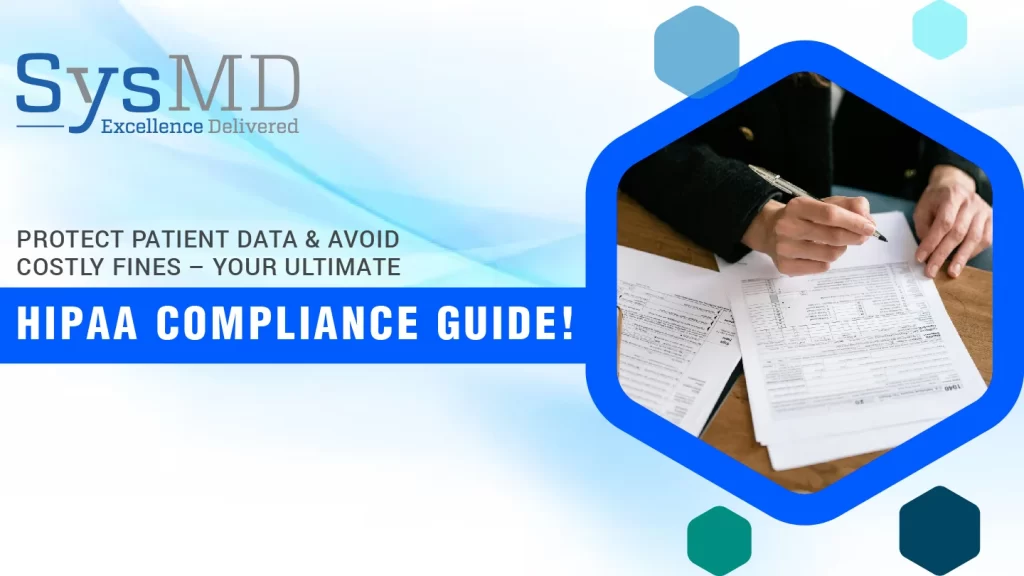Health Insurance Portability and Accountability Act (HIPAA) is a department that deals with healthcare and insurance matters. Its compliance checklist is based on the security and confidentiality of Protected Health Information (PHI). It means that they protect the integrity of hospitals and maintain the security of patient data. When healthcare organizations do not follow this checklist, they face many penalties.
In this blog post, we will provide a comprehensive guide to creating a HIPAA compliance checklist. We will discuss best practices, challenges, and solutions for HIPAA compliance in hospitals.
Understanding HIPAA Compliance
The HIPAA Compliance Checklist for Healthcare Providers mainly depends on three rules. Every rule plays an important role in protecting patient information and increasing the operational efficiency of the hospitals.
Security Rule
Security rules focus on protecting electronic PHI. It includes protection of access controls and encryption. It also secures data storage so that any unauthorized access cannot breach the important information of the hospital's data.
Privacy Rule
Privacy rule covers all forms of PHI. In this rule, a patient has adequate authority over his data. This rule governs how PHI can be disclosed and shared with the patients. It maintains the confidentiality of the patients.
Breach Notification Rule
If important information is breached without the affected individual’s permission, the Department of Health and Human Services must be notified. If reported timely HIPAA will take accountability measures against the violation. A well-structured HIPAA compliance outline ensures that covered hospitals follow the required rules.

Steps to Create a HIPAA Compliance Checklist
Do you want to create an effective HIPAA compliance checklist for your clinic? It is not difficult at all. You just have to follow some important steps by keeping in mind some compliance requirements and rules.
Practical steps to create a HIPAA compliance checklist are as follows:
Identify Compliance Requirements
Compliance requirements vary for each healthcare setup. Small clinics with one medical department follow different rules than large organizations with multiple departments. Therefore, identify the HIPAA compliance requirements for your setup. Review security, privacy, and breach notification rules in detail.
Conduct Risk Assessments
Conduct risk assessments to check the vulnerability of your hospital data. These assessments include evaluating physical security for PHI, access controls, and potential threats to ePHI. This process helps identify areas where security measures need improvement.
Implement Protections for PHI
Implement administrative, physical, and technical protections for electronic and physical PHI. This reduces the risk of patient data theft and enhances the hospital's confidentiality services.
Administrative Protection
Make policies for data access and train staff on compliance requirements.
Physical Protection
Lock the patient information and papers at a secure place and limit the visit of staff at that place.
Technical Protection
Implement encryption, multi-factor authentication, and activity monitoring for electronic systems.
Training staff on HIPAA Policies
Train your staff on HIPAA compliance policies and the consequences of violations to ensure security is not compromised. Keep them informed about updates in billing and insurance compliance. They should be equipped to handle PHI procedures, prevent breaches, and identify potential threats.
Document Policies and Procedures
All business associates should have a detailed record of your HIPAA compliance policies and procedures. Updates the document regularly and reviews it during internal audits. Further, this documentation will help you in case of any non-compliance act taken by mistake.
Perform Regular Audits
Perform regular audits to check compliance measures are followed in your hospital. You can find where you have to implement protective measures with the help of these audits. A HIPAA Compliance Checklist for Small Practices or large organizations is made up of all the above steps.
Best Practices for HIPAA Compliance
Do you want to create a perfect HIPAA compliance checklist? Then, you should follow these best practices:
Regular Updates
Compliance is all about following the updated measures. That is why, follow regular updates related to insurance, billing, and confidentiality and implement them in your routine practice. Also, update your checklist with these updates regularly.
Internal Audits
In healthcare setups, internal audits play an important role in checking the progress of protective measures for PHI. That is why, conduct internal audits regularly and keep yourself up-to-date with updated HIPPA compliance regulations.
Data Security Measures
Security measures can protect the PHI of your hospital. That is why, implement secure access controls, encryption, and monitors for ePHI systems. These measures will protect important data and will maintain the integrity of your healthcare organization.
Culture of Compliance
When all the members of a team follow the compliance measures appropriately, it will show a culture of compliance. Foster a culture of compliance in your hospital by ensuring that every staff member follows the HIPAA compliance checklist.

Common Challenges in Implementing HIPAA Compliance Checklist
No doubt, healthcare clinics put all their efforts into implementing compliance practices in their routine. Sometimes, they face many challenges in creating and implementing a HIPAA compliance checklist.
Common challenges in implementing compliance checklists in hospitals are as follows:
Keeping up with Regulatory Updates
As you know HIPAA offers updates on insurance and billing issues regularly. Usually, hospital staff seem busy in treating patients and they cannot update checklists regularly. When they do not follow these updates, they are stated as non-compliant and face penalties.
Managing Data Breaches
Managing data breaches is a complex process. Data breaches pose a significant threat to PHI security and can result in severe penalties.
Ensuring Staff Compliance
Business associates must train their staff to follow HIPAA rules. However, managing other important tasks often limits their focus on compliance implementation. Neglecting staff education on these rules can lead to difficulties later
Practical Solutions for Solving Compliance Problems
Do you want to make your hospital fully compliant to enhance operational efficiency? Then these solutions can help to solve the above challenges:
Automated Tools
Automated tools can help you streamline compliance tasks. For example, to comply with security rules, use tools like encryption and multi-factor authentication to protect your data. Regularly update your incident response plan to address breaches effectively.
Hire HIPAA Consultants
Professional HIPAA consultants can create a HIPAA compliance checklist effectively. A dedicated officer has a better understanding of rules and regulations and can educate your staff according to HHS guidelines.
Conclusion
In conclusion, a well-structured HIPAA compliance checklist is a cornerstone for securing PHI and avoiding regulatory penalties. Understanding HIPAA’s key components is essential for compliance. Creating a customized compliance checklist helps streamline the process. Following best practices allows healthcare providers and business associates to protect sensitive information while meeting compliance requirements.
Maintaining HIPAA compliance is an ongoing responsibility, but with regular updates, audits, and staff training, organizations can stay ahead of regulatory challenges. Implementing the steps and solutions outlined in this blog ensures that your organization is well-equipped to safeguard PHI. Start building your HIPAA compliance checklist today to secure your data and uphold trust in your services.


